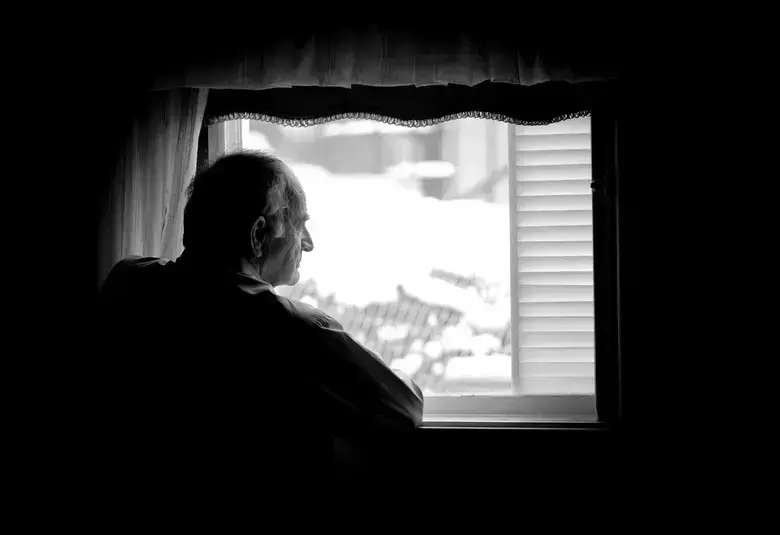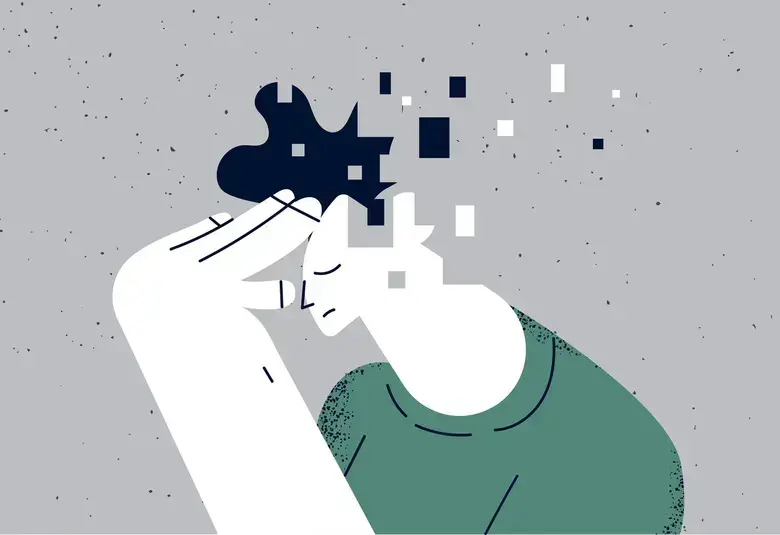Agitation drives poor life quality for dementia sufferers and their carers, and it also drives costs. So attempts to deal with it are vital, said session chair Sube Bannerjee (Brighton and Sussex Medical School, UK). The meeting heard new data on the impact of agitation, factors associated with it, and ways its burden can be reduced.
Agitation은 치매 환자와 간병인의 삶의 질을 저하시키고 비용을 증가시킵니다. 그래서 이를 해결하기 위한 시도는 매우 중요하다고 세션 좌장 수베 배너지(Sube Bannerjee, 영국 Brighton and Sussex Medical School)는 설명합니다. 이 회의에서 Agitation이 미치는 영향과 관련 요인, 사회적 비용을 감소시키는 방법에 대한 새로운 데이터들이 소개되었습니다.
Agitation is the most common neuropsychiatric symptom (NPS) in care home residents with dementia. The suggestion is that inner tensions lead to inappropriate or purposeless verbal, vocal or motor activity.
Agitation은 치매를 앓고 있는 요양원 입원환자에게서 나타나는 가장 흔한 신경 정신 증상(NPS)으로, 내적으로 발생한 긴장이 부적절하거나 무의미한 언어, 음성, 운동 활동을 초래하는 것으로 판단됩니다.
Though there has been relatively little research in support, the root problems seem to lie in unfulfilled and unexpressed needs. These could be pain or hunger, or need for stimulation. Agitation is associated with frontal lobe changes but the full role of neurodegeneration is not yet clear.
관련 연구가 상대적으로 적지만 충족되지 못하고 표현되지 못한 욕구가 근본적인 문제인 것으로 보입니다. 이러한 욕구는 통증이나 갈망, 또는 자극에 대한 욕구일 수 있습니다. Agitation은 전두엽의 변화와 관련이 있지만 신경퇴행 (neurodegeneration)의 전체 역할은 아직 명확하게 밝혀지지 않았습니다.
To demonstrate the impact of agitation, Gill Livingston (University College London, UK) presented cross-sectional data from the large Managing Agitation and Raising Quality of Life in Dementia (MARQUE) study involving more than 4200 patients in 86 care homes across England.1
Agitation이 미치는 영향을 보이기 위해, 길 리빙스턴(Gill Livingston, 영국 런던대학교)은 영국 전역 86개 요양원의 4,200여 명 이상의 환자를 대상으로 수행된 대규모 연구인 Managing Agitation and Raising Quality of Life in Dementia(MARQUE)의 횡단면 분석 데이터를 제시했습니다.1
Forty-three percent of the homes specialized in dementia; and 86% of patients had dementia, which was severe in 38% of cases. Their mean age was 85 years and 69% were female. The mean Cohen-Mansfield Agitation Inventory (CMAI) score was 41, indicating clinically significant agitation.
이들 요양원 중 43%가 치매 전문 요양원이며, 환자의 86 %가 치매 환자였고, 이중 38 %는 중증 치매 환자였습니다. 환자의 평균 나이는 85세며 69%가 여성이었습니다. 치매 Agitation 측정에 활용되는 Cohen-Mansfield Agitation Inventory(CMAI) 척도는 평균 41점으로 임상적으로 유의한 Agitation을 보였습니다.
On average, patients had only 18 minutes per day of scheduled activity. But there was no association between agitation and fewer hours of activity per week, nor with the assessed comfort of the home environment.1
환자들의 규칙적인 활동은 하루 평균 18분에 불과했지만, 주당 활동시간 또는 요양소 환경의 안락 수치와 Agitation간의 연관은 없는 것으로 나타났습니다.1
Agitation unrelated to family visits and staff numbers
가족의 방문 횟수와 직원 수는 Agitation과 무관
Against expectations, people with agitation according to the CMAI had not had fewer family visits than those who were not agitated. This may be because family members of agitated patients were visiting frequently in an attempt to alleviate their distress.
가족 방문 횟수에서 차이를 보일 것이라는 예상과 달리, CMAI로 측정했을 때 Agitation을 보이는 환자는 그렇지 않은 환자보다 가족 방문 횟수가 적지 않은 것으로 나타났습니다. 이는 Agitation을 보이는 환자의 가족들이 환자의 고통을 덜어주기 위해 더 자주 방문하기 때문일 수 있습니다.
And agitation was not associated with there being fewer staff per patient; but this may be because more staff are needed to deal with agitation. The longitudinal study (which has been completed but not yet analyzed) should cast light on whether relative absence of staff is a causative factor in agitation in the first place.
또한, Agitation은 환자당 직원 수가 적은 것과 관련이 없는 것으로 나타났습니다. 그러나 이는 Agitation을 다루는데 더 많은 직원이 필요하기 때문일 수 있습니다. 하지만 이 부분에 대해서는, 진행 완료했으나 아직 결과 분석 전인 종단 연구(longitudinal study)가, 상대적으로 적은 직원의 수와 Agitation간의 상관관계를 밝혀줘야만 결론지을 수 있을 것입니다.
However, one thing made clear by the cross-sectional study is the association of agitation with quality of life: staff ratings of patient QoL correlated -0.53 with agitation. People with agitation were six times more likely than non-agitated patients to be taking antipsychotics. But they were no more likely to be taking analgesics or antidepressants.1
그러나 횡단 연구(cross-sectional study) 결과상 분명한 것은 Agitation과 삶의 질과의 상관관계입니다. 요양원 직원들이 측정한 환자들의 삶의 질(QoL)은 Agitation에 대하여 -0.53의 상관관계를 가지고 있는 것으로 나타났습니다. Agitation을 보이는 환자는 그렇지 않은 환자보다 항정신병약을 복용할 확률이 6 배 더 높은 반면, 진통제나 항우울제에 대해서는 그렇지 않은 것으로 나타났습니다.1
If we only take TIME
TIME 모델을 갖고 접근하는 것이 필요
The London meeting heard the first presentation of results from the cluster-randomized trial of TIME: Targeted Interdisciplinary Model for the Evaluation and Treatment of Neuropsychiatric Symptoms. In this study, use of the Model – which builds on the principles of cognitive behavioral therapy and other initiatives in patient-centered care -- was associated with statistically and clinically significant improvement in patient agitation and quality of life at 12 weeks when compared to controls.2
런던 회의에서 무작위로 설정한 집단의 신경정신병 증상의 검사와 치료를 위한 학제간 모델(TIME: Targeted Interdisciplinary Model for the Evaluation and Treatment of Neuropsychiatric Symptoms) 시험 결과가 최초로 발표되었습니다. 인지 행동 치료와 기타 환자 중심 치료 원칙에 기반을 둔 동 치료 모델은, 연구 12주차에서 대조군과 비교했을 때, 임상적으로 의미 있는 수준의 Agitation 완화와 삶의 질 개선이 나타났으며, 대조군과 통계적으로도 유의한 차이를 보였습니다.2
Presenting the data, Geir Selbaek (University of Oslo, Norway) described the three phases of the intervention.
게어 셀백(Geir Selbaek, 노르웨이 오슬로 대학교)은 데이터를 제시하며 개입(intervention)의 세 단계를 설명했습니다.
Registration and assessment -- which includes clinical exam, review of records, assessment of pain, and the recording of behavioral symptoms over 24 hours – is followed by a phase of reflection, during which case conferences seek to understand the causes of NPS and develop a detailed and individualized treatment plan. The final phase is one of action and evaluation.
세 단계 중 첫 번째 단계는 등록 및 평가로 임상검사와 기록 검토, 통증 평가, 24 시간 동안의 행동 증상 기록을 포함합니다. 두 번째 단계는 평가의 반영 단계로 NPS의 원인을 파악하고 개별적인 상세 치료 계획을 수립합니다. 마지막 단계로 이에 대한 조치 및 평가가 진행됩니다.
Trial of the intervention, based on a manual developed by Bjørn Lichtwarck3, sought to include patients typical of everyday care. Patients had moderate to high agitation, defined as a score of 6 or more on the Neuropsychiatric Inventory-Nursing Home Version. The only exclusion criterion was a life expectancy of less than six weeks.
비욘 리히트와크(Bjørn Lichtwarck)3의 매뉴얼에 기반한 개입 시험은 일상 치료를 받고 있는 전형적인 환자를 포함시키려 했습니다. 이들은 신경정신과 평가목록-요양소 버전(Neuropsychiatric Inventory-Nursing Home Version)에서 6 점 이상을 받은, 중등도에서 중증의 agitation이 나타나는 환자들이었습니다. 유일한 배제 기준은 기대 수명이 6주 미만인 것이었습니다.
An analogy can be made with the patient experiencing shortness of breath. In that case, we don’t reach straight for the antibiotics. So too with NPS such as agitation. Let us first take the time to seek the cause. We can make a difference when we take care to understand and meet the needs of people with dementia.
이는 호흡 곤란을 경험하는 환자에 비교해볼 수 있습니다. 이 경우, 보통 환자에게 항생제를 바로 투약하지 않습니다. Agitation과 같은 NPS도 마찬가지입니다. 먼저 원인을 파악하는 것이 필요합니다. 치매 환자가 필요로 하는 것을 파악하고 이를 충족시키는 것이 중요합니다.
In the 2020 dementia plan, TIME will be implemented in Norwegian nursing homes. A model applicable to home care is being developed.
2020 치매 계획상으로 TIME이 노르웨이 요양원에서 도입될 예정입니다. 자택 요양에 적합한 모델이 현재 개발 중입니다.
Rolling out DICE
DICE 접근법
Describe the problem behavior; Investigate possible underlying causes; Create a treatment plan in collaboration with carers and others; and Evaluate the outcome – the four elements of the DICE approach, as describe by Helen Kales (University of Michigan, Ann Arbor, USA).4
헬렌 케일즈(Helen Kales, 미국 앤 아버, 미시간 대학교)는 문제 행동의 기술; 근본 원인 파악; 간병인 등과 협력하여 치료 계획 수립; 결과 평가의 네 가지 단계를 포함하는 DICE 접근법을 설명합니다.4
One problem is that the approach takes time and training, and these are not yet reimbursed. So the DICE team has developed a web-based tool, the WeCareAdvisor. The tool, which can be personalized to the race and gender of the carer, walks the user through the DICE approach to managing problematic behaviors as well as containing a Caregiver Survival Guide.
이 접근법의 문제점은 많은 시간과 교육이 필요하며 아직까지 보험급여 적용을 받지 못했다는 것입니다. 그래서 DICE 팀은 웹 기반 도구인 WeCareAdvisor를 개발했습니다. 이 도구는 간병인의 인종과 성별에 따라 개인 맞춤이 가능하며 DICE 방식을 통한 문제 행동대응법과 간병인 서바이벌 가이드(Caregiver Survival Guide)가 포함되어 있습니다.
A daily messaging feature, which provides the carer with motivational support, is also proving a popular feature.
간병인에게 동기 부여를 제공하는 일일 메시지 기능 또한 많은 호응을 얻고 있습니다.
The WeCareAdvisor tool was evaluated in a small randomized phase II study, with a crossover design. Results suggest that the tool is effective in reducing caregiver distress and increasing confidence.
WeCareAdvisor의 효용성은 교차설계(crossover design)인 소규모 무작위 2상 연구를 통해 평가되었으며, 그 결과 간병인의 스트레스를 줄이고 자신감을 높여주는 효과가 있음이 확인되었습니다.
저희 담당자는 과학적 근거를 토대로 심포지엄의 주요 자료를 선정합니다. 본 페이지의 의견이 반드시 룬드벡의 의견을 반영하지는 않습니다.




